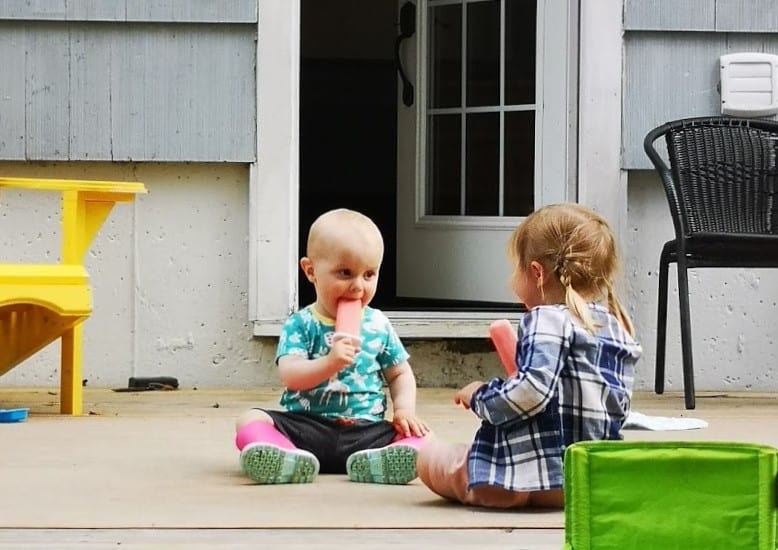I’ve never really questioned my decision-making abilities. I can choose what flavour of ice cream I want in a split second (salted caramel!); I typically trust my instincts, and I tend to ask the right questions to weigh the pros and cons.
When I heard about Treehouse Village Ecohousing and started learning more, I became VERY aware that the decision to purchase a home here would require my head (cognition), my heart (emotion), and my gut (intuition). That’s a big one.
As I dove further into the process and connected with the wonderful people who were already all-in building this community, my heart was all in – I felt supported and my cup was full after every meeting spent with this caring, welcoming community of people who share my values. My gut soon told me to jump in, as this project was hitting many of my hopes and dreams for the future in one fell swoop. But my head … my head required some analysis to validate the feelings from my gut and heart.
How could my family justify the cost of a new home in a cohousing community? We already have a happy home in a great community, and our home at Treehouse Village would actually be smaller, but the purchase price is higher than the home we already own.
After some more careful exploration and many discussions with my family and other Treehouse members, it became clear that living at Treehouse Village is actually going to greatly reduce some of our daily expenses and enhance the lifestyle for my whole family. Here are just some of the ways I expect to save money by living in cohousing.
Lower utility bills
Because our home will be significantly smaller and built to Passive House standards, it will use considerably less energy to heat. We are anticipating heating bills to be approximately $100 per year (no, not month, year). Once the community installs the planned solar panels, our electricity bills could go down even further.
Lower maintenance costs
Because we are buying into a new cohousing project, our home will need much less maintenance than our current 60+ year old home requires. The community will share the day-to-day maintenance of the property, such as shoveling snow and gardening. This will save time and money as residents often take on the maintenance and landscaping work themselves based on what they enjoy doing most or rotate the responsibilities.
Fewer one-off purchases
Access to shared resources and equipment will allow us to decrease our material possessions without reducing our quality of life. Future neighbours are already dreaming up our shared library of things for the garden, workshop, art studio, play, camping, sports, or special kitchen projects. It means we won’t need to each own and store so many things. There are also new opportunities for collective purchases we wouldn’t otherwise make on our own, like a Common House espresso machine or a shared electric vehicle. If we need something that’s not owned by the community as a whole, like an extra bike, a spare phone charger, or a cup of almond flour to bake a gluten-free cake, chances are, our neighbours will be willing to help out because that’s what neighbours in cohousing communities love to do – share!
Savings on activities and lessons
My family and I look forward to participating in more activities than ever, at reduced or zero cost. From yoga classes to guitar lessons, slack-lining to brewing kombucha, either a neighbour will be keen to coordinate and instruct or we can share the cost of an instructor with other households. With shared exercise space, workshops, and gathering space, we don’t need room in our own home for a gym, we won’t need a garage for working or a massive living space for entertaining – it’s all there in the Common House and shared spaces so we can maintain or upgrade our hobbies with ease.
Reducing the demands and expenses of daily life
In a cohousing community where we know our neighbours well, we’ll have the option to share some of our daily tasks. There is the possibility of sharing child care responsibilities among families to greatly reduce child-care costs. We can choose to share community meals weekly or more often, not only to save time and money, but to socialize with neighbours. Because of the proximity of our neighbours, it will be easier to collaborate on the running of errands or establishing a bulk purchasing club as ways to simplify our daily routines. These coordinated efforts have also shown to help reduce the risks associated with COVID-19.
Market demand supports resale value
Experience has shown that cohousing communities have excellent resale value. People are willing to pay for the added quality construction, quality of life, and community benefits. While we know that we’ll very likely want to be a part of Treehouse Village Ecohousing for the long-term, it’s nice to know that if we decide to move, our investment will be protected.
The closer my family gets to moving into Treehouse Village, the more confident I am in my decision to trust my heart, head, and gut. If you’re curious about cohousing and want to learn more about what to expect in terms of living costs, feel free to reach out to me, your potential future neighbour, and I’d be happy to chat!

Leave a Reply